The post-apocalypse is one of the cornerstone concepts in modern media, be it books, films, or video games. From The Last of Us to Bioshock, from Mad Max to Snowpiercer, our collective appetite for worlds that have fallen into ruin speaks volumes of the exhaustion many feel at the current state of global affairs. When societal collapse becomes a tempting escape, there’s something truly, deeply wrong.
Lisa falls squarely into the post-apocalypse category, but it predates much of the modern mania with the genre, releasing originally in 2014. It also offers a unique spin on the tried-and-tested post-apocalypse concept: rather than having a cataclysmic disaster or deadly virus be the instigator for its world’s woes, Lisa instead imagines a freak incident called ‘The Flash’, wherein every woman on earth mysteriously disappears. From this simple conceit, it manages to weave a rich narrative tapestry that interrogates some of the darkest aspects of human nature; a tapestry in which the main colors used are black and red. It was a shocking cult hit upon its original release, but nine years later, in a market more saturated with similar content than ever before, does its new definitive edition still hold the same power? Let’s hit the road and find out.
Setting the scene
Lisa begins with a beating. Your main character, Brad, takes continuous punches to the face from a group of local kids, reducing him to a bloody mess on the playground tarmac. Following this, he slinks off home, where he receives similar treatment from his abusive, alcoholic father. The two episodes constitute a bold opening to Lisa’s story, and make it clear that this isn’t a game that will be pulling any punches, in either the literal or metaphorical sense. Tough subject matter will be tackled head-on, and you’ll feel the full impact of it, despite the quirky, colorful art style that calls to mind Earthbound more readily than The Walking Dead.
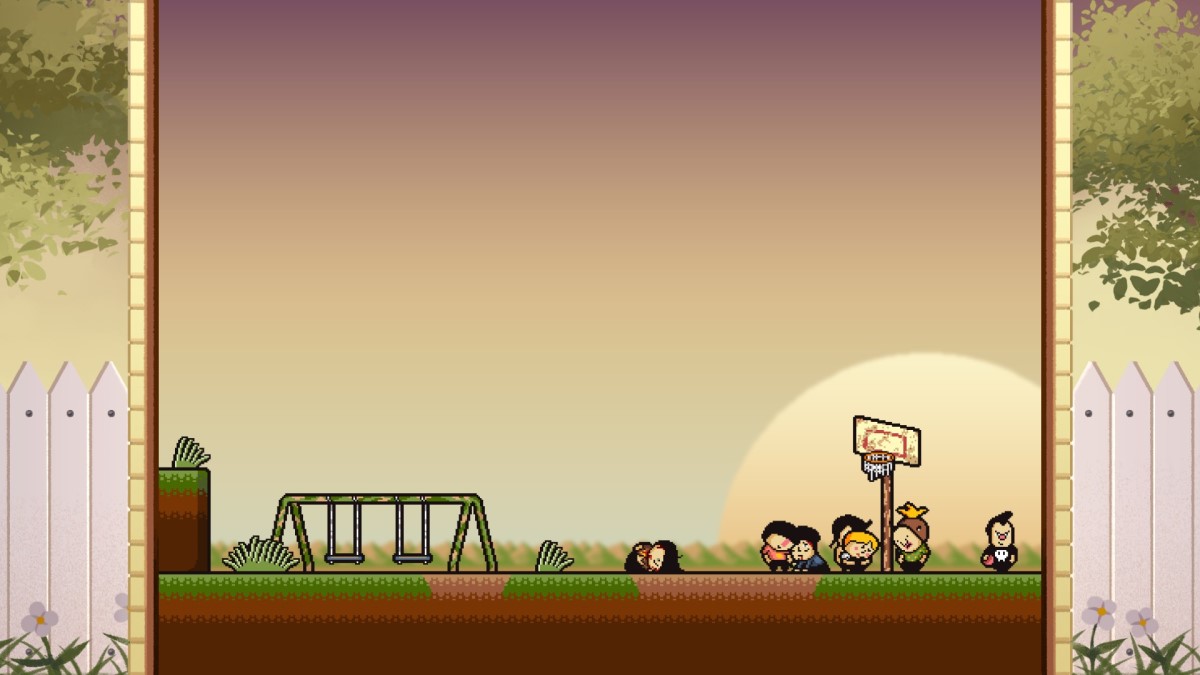
Screenshot by PC Invasion
These two scenes are immediately followed by a jump ahead in time, to the post-Flash world where the bulk of Lisa takes place. They’re incredibly important, however: not just as character moments for Brad, but as an introduction to the central theme of the game: masculinity. Being set in a world without women, the entire cast, with the exception of the central child we’ll get to shortly, is made up of men, and the Flash as a concept lets Dingaling Productions explore the implications of such a world in detail across the game’s runtime. It’s not dissimilar to the ideas investigated by the likes of Lord of the Flies and Gone, but while those works examined the inherent savagery of man through the eyes of desperate children, Lisa instead takes a deep dive into gender politics, and offers a cynical-yet-nuanced commentary on the modern man in the process.
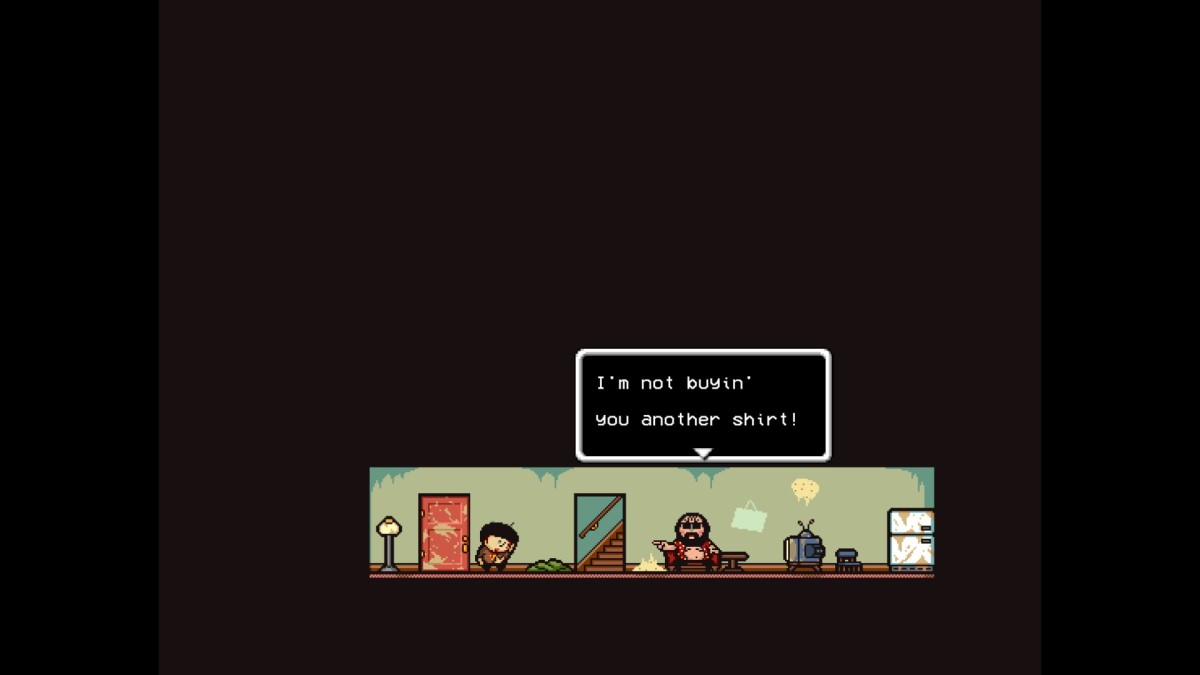
Screenshot by PC Invasion
When the game proper begins, we see an older Brad, now bearded and haggard, stumbling upon an abandoned child out in the sandy wastes of the post-Flash world. Perhaps guided by a desire to redeem the sins of his own father, he takes the child in, and brings it to the camp where he and a few fellow men have been living. They discover the child is a girl, and suddenly the world shifts on its axis. The implications of being the only known woman in a world full of men are as vast as they are horrifying, and Lisa wastes no time in addressing them, with one campmate suggesting they turn her over to a powerful gang leader in exchange for lives of luxury. This proposition is swiftly denied, however, and the child grows up in relative peace, her gender concealed from the world by masks and isolation.
Into the wastes
A quiet, pleasant life isn’t much of a basis for an RPG story, of course, so it’s not long before things go south, the truth about the child is discovered, and Brad’s friends are all slaughtered during her kidnapping by an unknown villain. So begins a rescue mission a la Fallout 4 by way of William S. Burroughs, as Brad ventures out into a testosterone-drenched, vice-ridden hellscape in search of the last known woman on earth.

Screenshot by PC Invasion
In action, Lisa plays like a purely 2D Mario RPG, with a hearty dollop of Earthbound heaped on for good measure. You explore a series of 2D environments designed like platforming levels, chatting to an increasingly surreal cast of characters, and fight enemies in turn-based combat. All three pillars of Lisa’s gameplay are well-represented, but it’s the first two that really take precedence, firmly establishing Lisa as a game that puts narrative first and mechanical gameplay second.
A lot of this narrative is delivered in conventional ways, through character dialogue and interactions with environmental objects, but there are some excellent mechanical expressions of it as well. Choosing to rest at a campfire to replenish your party’s health, something you do without thinking in countless RPGs, carries extra risk here, as your party may be attacked or even kidnapped while vulnerable in the night. This makes you consider whether you really need to rest each time you do, and reinforces the idea that the world of Lisa is dangerous: something that many post-apocalyptic games struggle to reconcile with the power fantasy that they also provide.

Screenshot by PC Invasion
You’ll also see it in the world design, which feels deliberately confusing. Whole areas can be found behind tiny holes in rock walls, and the 2D nature of it makes crafting a mental map much trickier than in top-down or 3D equivalents. It’s frustrating in practice, but it also hammers home the idea that Lisa’s world isn’t made for you, and isn’t interested in helping you get through it. When you’re low on health, and can’t remember which cave entrance leads to your last save point, you’ll feel the desperation that the real survivors of such a world would feel. And it’s exhilarating.
First one’s free
These design decisions, while counter-intuitive by typical standards, help to build up an atmosphere of unease that feels wholly appropriate for Lisa’s mature subject matter. As you travel the wastes, you’ll see human depravity of all kinds. The typical post-apocalypse violent gangs are present, of course, but they’re just one ingredient in a rich broth that also includes sexual deviants, drug addicts, alcoholics, and the quieter tragedy of lonely men who express their longing for their lost wives in the form of cruel jibes at their expense. In the absence of traditional societal structures, your party members adopt idealized masculine ‘dream roles’ including hunter and luchador. It’s a deeply sad world, and one that feels fully-realized despite Lisa’s relatively short runtime.
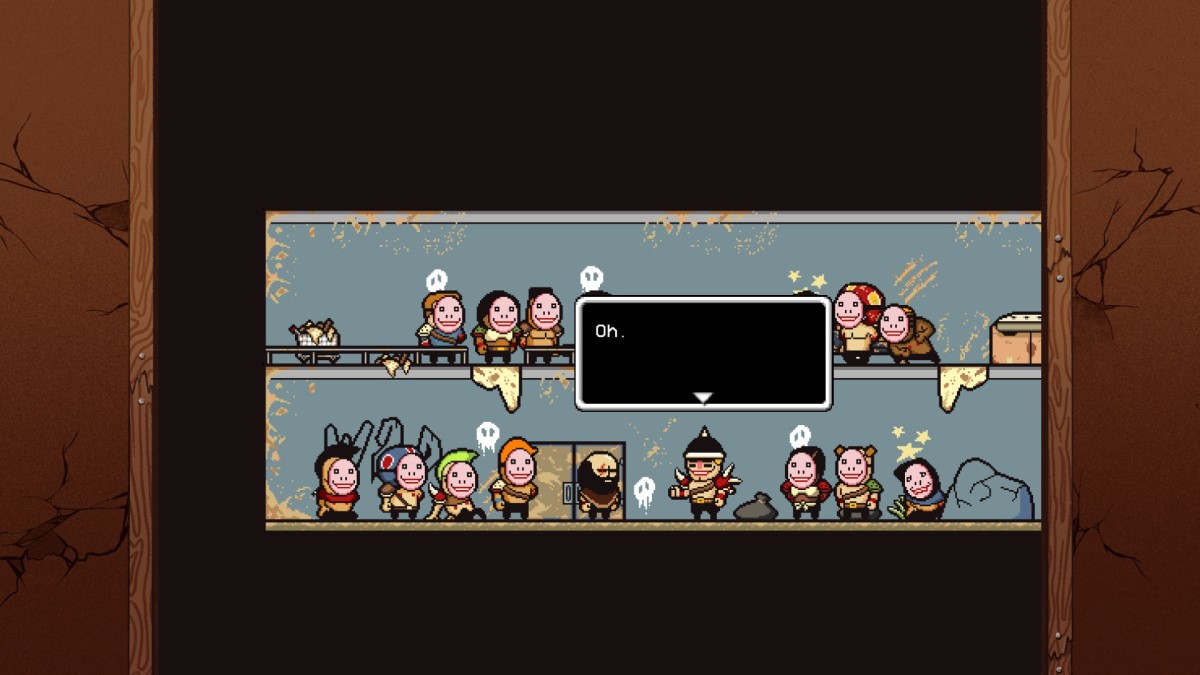
Screenshot by PC Invasion
The note on drug addicts above is particularly important, as your main character, Brad, is one himself. While not explicitly stated, from the start of the game you’ll notice that he starts experiencing ‘withdrawal’ symptoms regularly, which drastically reduce his effectiveness in combat until you rest, ride them out, or take another hit of Joy, Lisa’s signature drug. Drug addiction isn’t a topic that many games have made serious efforts to address, and Lisa’s interpretation isn’t particularly complex either, but it succeeds in putting you in the headspace of an addict by creating difficult-to-manage withdrawal situations.
Withdrawal can strike at any time, including right before battle, which can leave Brad, generally your main damage dealer, out of commission. If your other party members are well-leveled, you can afford to have him guard up and sweat it out, but you don’t always have that luxury. Sometimes, the only way to get out of a situation alive is to take a hit of Joy for instant withdrawal relief, and a big stat boost to boot. Doing so only furthers the self-destructive loop the game puts you in, and it doesn’t just apply to Brad either. Other party members will come with their own vices, such as the liquor-loving archer Olan, which you’ll need to master in order to make the best use of them in combat.
Combo breaker
We haven’t touched on Lisa’s combat much in this review, and that’s because there’s not a huge amount to report. It’s fairly standard as far as turn-based RPG combat goes, with skills to learn, items to manage, and foes to face. One notable wrinkle the game adds is a fighting game-esque combo input system for character skills, reminiscent of Sabin from Final Fantasy 6. Brad, and other characters you’ll meet on your quest, need to enter specific button combos in order to execute their skills to the fullest, which demands a bit of rote memorization from the player.
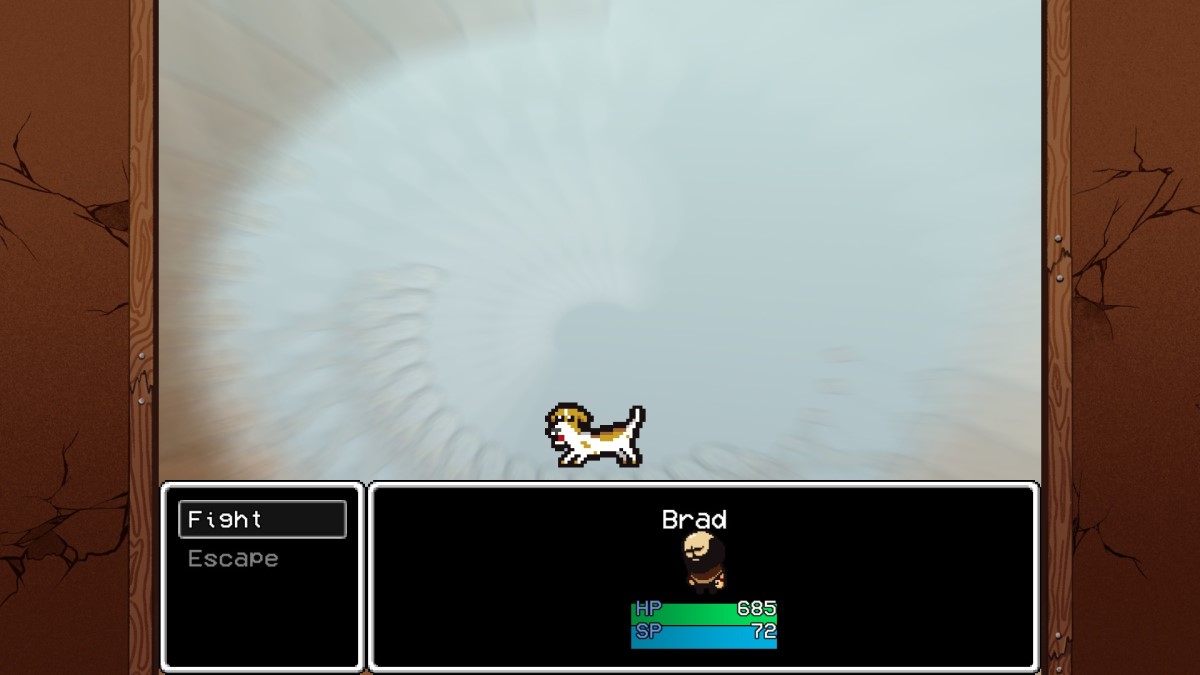
Screenshot by PC Invasion
You can always check on these combos in combat, so you can brush up right before the blow, but doing so grows exponentially more difficult when you add more combo-based attackers to your party. It’s a nice mechanical novelty, and one that gives Lisa’s combat a bit of personality, while also tying nicely into the themes of masculine obsessions with violence that pervade the rest of the experience.
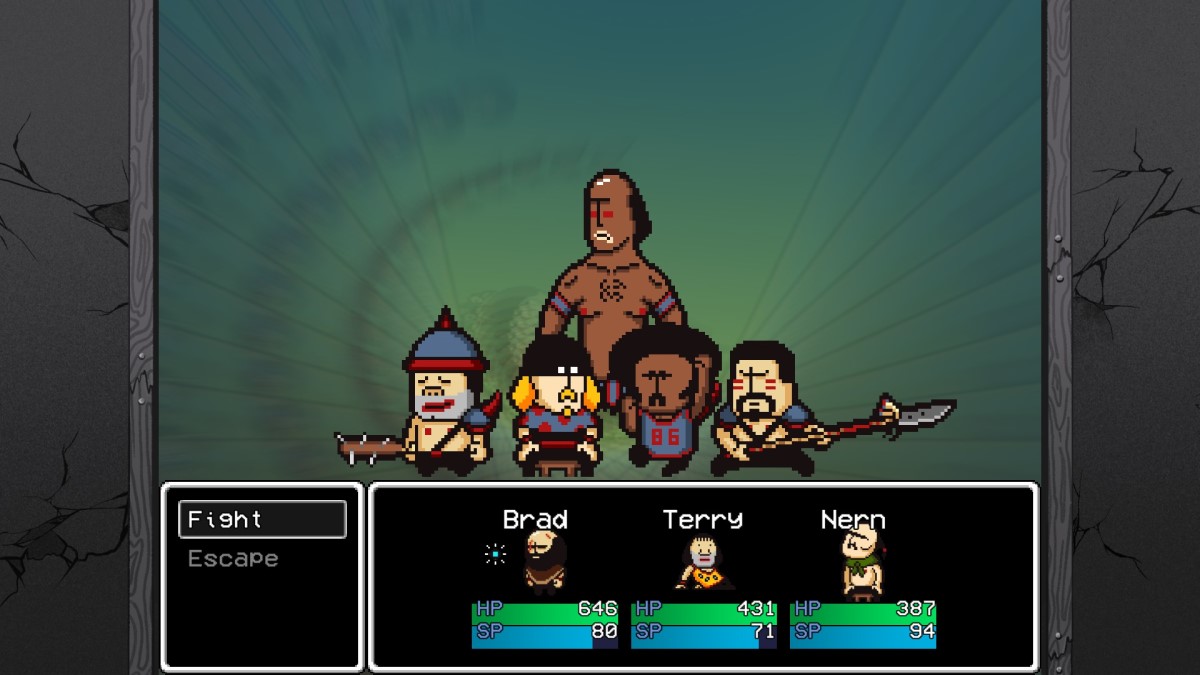
Screenshot by PC Invasion
While not a novel feature by any means, the high difficulty of Lisa’s combat feels very appropriate as well. The risky save points and combat penalties associated with substance abuse wouldn’t hold much weight if the battles you had to fight weren’t actually challenging, so we’re pleased to report that they are. Even early on, we found ourselves grinding levels against Shadowy Figures in a cave, stacking up money for better equipment and boosting recently-recruited party members to usable states. Doing so was necessary in order to triumph over the game’s first major boss, a fleshy abomination known as Charmy, and while we appreciated the combat having teeth, it did clash somewhat with the focus on narrative seen elsewhere in the game.
Worthy work
That narrative and the world Lisa builds around it are the real stars of the show here, which makes it frustrating when further progress is gated behind a monstrous difficulty spike that shoots up seemingly out of nowhere. We understand the need for stakes and tension in a game like this, but when you’re taking a break from recruiting luchadores at the local bar, getting scammed by an old man in a ramshackle hut, or accidentally setting fire to an orphanage full of children, it’s hard to feel like the uninteresting turn-based combat is worth it.
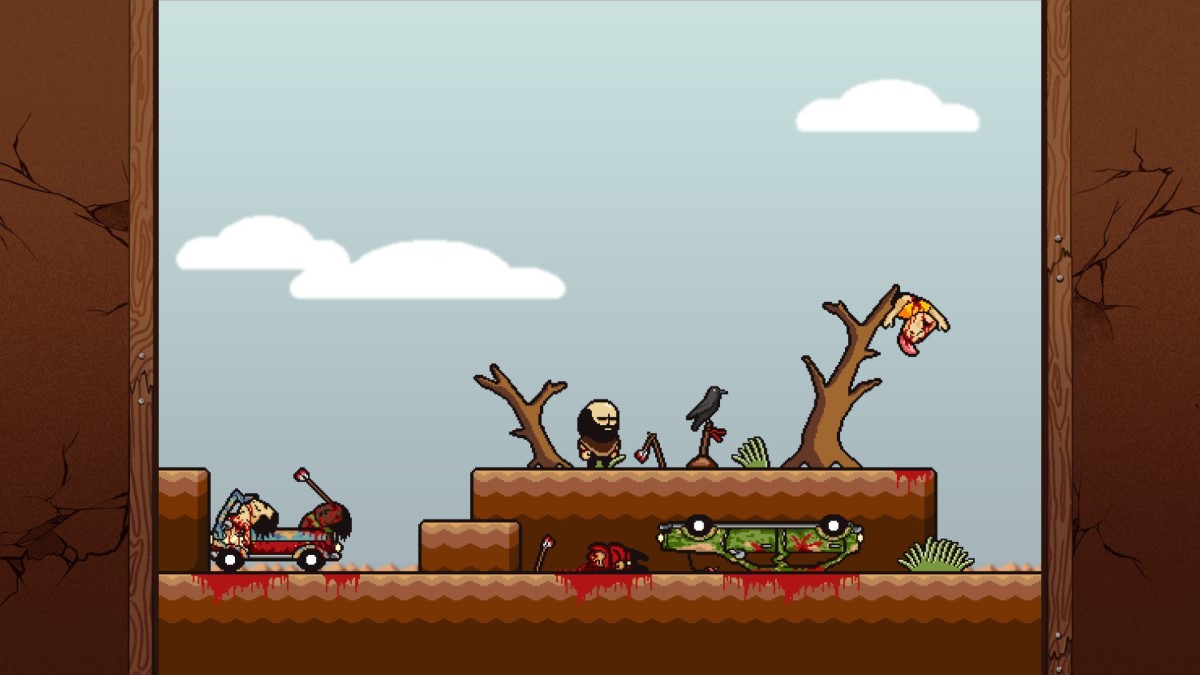
Screenshot by PC Invasion
It’s a tough balance to nail, and the developers have done an admirable job, but for us the scales are weighted slightly too heavily on the difficulty side. Thankfully, for all players who feel this way, the new Definitive Edition introduces Painless Mode: a new option you can enable at any time by using a key item, and one which drastically reduces the overall difficulty of the game, letting you cruise through and soak in the story. The game definitely loses some of it’s killer edge if you do this, so it’s a compromise, but it’s a great inclusion in terms of both accessibility and general enjoyment. And if you’re a real glutton for punishment, the new Painful Mode lets you turn up the heat and makes save points single-use: not a particularly green initiative, but one that makes your every decision count in a way that they didn’t before.
With these new options, alongside jumped-up visuals and effects and general polish, Lisa shines just as brightly today as it did when it debuted in 2014. Even in a gaming landscape replete with post-apocalypse fantasies, its bleak depiction of a world without women feels bold and relevant, delivering a stellar narrative supported by offbeat mechanical design decisions. It’s not a game that you’ll always enjoy playing, and at times you’ll actively hate it, but those powerful emotions are your ultimate reward for persisting. Lisa is a game that rolls you in life’s dirt and defies you to stand up again. If you can manage this, then it’s truly one of the most shocking, vivid odysseys the gaming world has to offer.
Stay connected with us on social media platform for instant update click here to join our Twitter, & Facebook
We are now on Telegram. Click here to join our channel (@TechiUpdate) and stay updated with the latest Technology headlines.
For all the latest Gaming News Click Here
